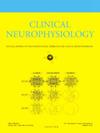颅内电生理学致痫区自动定位的评估指标
IF 3.7
3区 医学
Q1 CLINICAL NEUROLOGY
引用次数: 0
摘要
导言致痫区的精确定位对于癫痫手术的成功至关重要。然而,癫痫与正常电极接触方面的不平衡数据集以及标准化评估指南的缺乏阻碍了对自动机器学习定位模型进行一致的评估。方法本研究通过分析临床数据集中的类别不平衡以及评估通用评估指标来应对这些挑战。本研究分析了两所医院 139 名耐药性癫痫患者的数据。结果补充使用接收者操作特征下面积(AUROC)和精确度-召回曲线下面积(AUPRC)提供了一种最佳评估方法。意义采用该框架将提高机器学习模型在致痫区定位中的可比性和多中心测试,增强其可靠性,最终为癫痫患者带来更好的手术效果。本文章由计算机程序翻译,如有差异,请以英文原文为准。
Metrics for evaluation of automatic epileptogenic zone localization in intracranial electrophysiology
Introduction
Precise localization of the epileptogenic zone is critical for successful epilepsy surgery. However, imbalanced datasets in terms of epileptic vs. normal electrode contacts and a lack of standardized evaluation guidelines hinder the consistent evaluation of automatic machine learning localization models.
Methods
This study addresses these challenges by analyzing class imbalance in clinical datasets and evaluating common assessment metrics. Data from 139 drug-resistant epilepsy patients across two Institutions were analyzed. Metric behaviors were examined using clinical and simulated data.
Results
Complementary use of Area Under the Receiver Operating Characteristic (AUROC) and Area Under the Precision-Recall Curve (AUPRC) provides an optimal evaluation approach. This must be paired with an analysis of class imbalance and its impact due to significant variations found in clinical datasets.
Conclusions
The proposed framework offers a comprehensive and reliable method for evaluating machine learning models in epileptogenic zone localization, improving their precision and clinical relevance.
Significance
Adopting this framework will improve the comparability and multicenter testing of machine learning models in epileptogenic zone localization, enhancing their reliability and ultimately leading to better surgical outcomes for epilepsy patients.
求助全文
通过发布文献求助,成功后即可免费获取论文全文。
去求助
来源期刊

Clinical Neurophysiology
医学-临床神经学
CiteScore
8.70
自引率
6.40%
发文量
932
审稿时长
59 days
期刊介绍:
As of January 1999, The journal Electroencephalography and Clinical Neurophysiology, and its two sections Electromyography and Motor Control and Evoked Potentials have amalgamated to become this journal - Clinical Neurophysiology.
Clinical Neurophysiology is the official journal of the International Federation of Clinical Neurophysiology, the Brazilian Society of Clinical Neurophysiology, the Czech Society of Clinical Neurophysiology, the Italian Clinical Neurophysiology Society and the International Society of Intraoperative Neurophysiology.The journal is dedicated to fostering research and disseminating information on all aspects of both normal and abnormal functioning of the nervous system. The key aim of the publication is to disseminate scholarly reports on the pathophysiology underlying diseases of the central and peripheral nervous system of human patients. Clinical trials that use neurophysiological measures to document change are encouraged, as are manuscripts reporting data on integrated neuroimaging of central nervous function including, but not limited to, functional MRI, MEG, EEG, PET and other neuroimaging modalities.
 求助内容:
求助内容: 应助结果提醒方式:
应助结果提醒方式:


